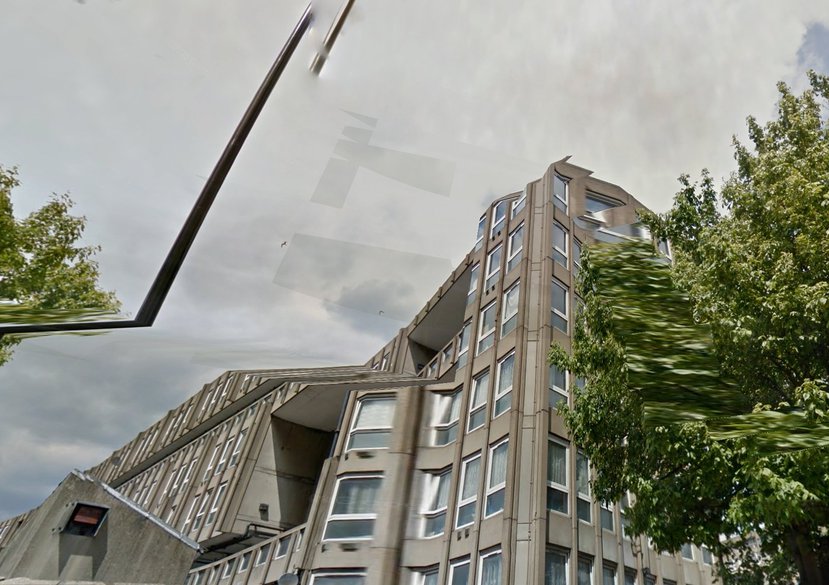
Brutalist Architecture on the Internet: Future Territories/Echoes From The Ruins
Brutalism is dead. It is a ghost. Its image haunts us, reminding us of a future that never came to be. The ongoing physical and ideological destruction of Britain's Brutalist legacy continues to erase the notion of an alternative to neoliberalism from the collective memory. Whilst the idea of our virtual and physical worlds being separate entities is becoming indistinct and the question of which space is more real increasingly blurred. This research looks to cyberspace to provide a territory in which the ruins of Brutalist Architecture can be excavated and (re)imagined to (re)claim and (re)locate the utopian ambition of past gestures.
Today technology mediates and articulates our lifestyles in unparalleled ways with images occupying an increasingly important place in the communication and transmission of information. The Internet is a complex system of duplications, distorting and destabilising the original; shifting our understanding of truth and reality - if we can still recognise reality? In Ken McMullen’s 1983 film Ghost Dance Jacques Derrida says "I believe that ghosts are part of the future… the modern technology of images… like cinema… enhances the power of ghosts and their ability to haunt us”. As image files are compressed and downloaded in cyberspace they lose information, they become unstable, they become ghosts. In her 2009 essay, In Defense of the Poor Image, Hito Steyerl describes the way networked images move from their original context into new spaces that allow them to acquire new meanings. In relation to what Steyerl termed the ‘poor image’, she says that ‘one could of course argue that this is not the real thing, but then—please, anybody—show me this real thing.’
Somebody show me the real Brutalism?
New visions of a socially progressive future are needed now more than ever in the wake of the increasing privatisation of space (as experienced online and offline). This research investigates our understanding of the Internet as a space: not a virtual, abstract cyberspace but an augmented version of the old, real world. By reframing Situationist methods, such as the dérive and détournement, I will show that meaning is not inherent within the Brutalist architectural vocabulary and that we can construct a new national narrative. The misappropriation of digital images from online platforms and the potential mutations to meaning that arise from acts of displacement will provide a framework from which to construct a virtual history for Brutalist Architecture - a Brutalism 2.0. Cyber-geographic methods will be developed to examine notions of progress, change and dis-location, discovering the lost forgotten and misplaced, reflecting a landscape in a continual synthetic flux and reconsidering our future occupation of and relationship to place. By infusing the artistic genres of video and technology with digital-piracy I intend to show that the Internet provides a ready-made aesthetic to visually articulate the distortion of time and history, examining the transference of memory, describing a world where ruins have become utopias and where archaeology and futurism merge.
Key details
School, Centre or Area
Gallery
More about Gareth
Biography
Gareth Proskourine-Barnett (1984) is an artist, researcher and lecturer currently based in London. His multi-disciplinary practice investigates our relationship to place, documenting landscapes and environments altered by human intervention. Since graduating with an MA in Communication Design from Central Saint Martins in 2011 he has worked on a range of self-initiated and commissioned projects, taken part in artist residencies and delivered workshops internationally. Alongside his personal practice Gareth collaborates with other designers and writers on publishing projects under the name Tombstone Press. His work has been exhibited at museums and galleries in the UK, Russia, India, Thailand and the USA. Gareth also teaches Visual Communication and Illustration at Birmingham City University, and has lectured at institutes including Brighton University of the Arts and Silpakorn University in Bangkok.
Gareth is currently working towards a PhD at the Royal Collage of Art in the department of Critical and Historical Studies. His practice-led research looks to cyberspace to provide a territory in which the ruins of Brutalist Architecture can be excavated and (re)imagined to (re)claim and (re)locate the utopian ambition of past gestures.
